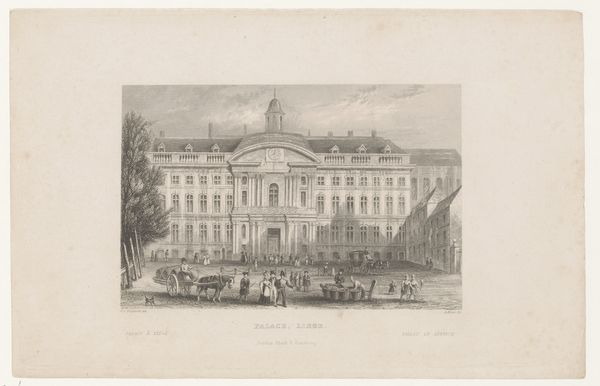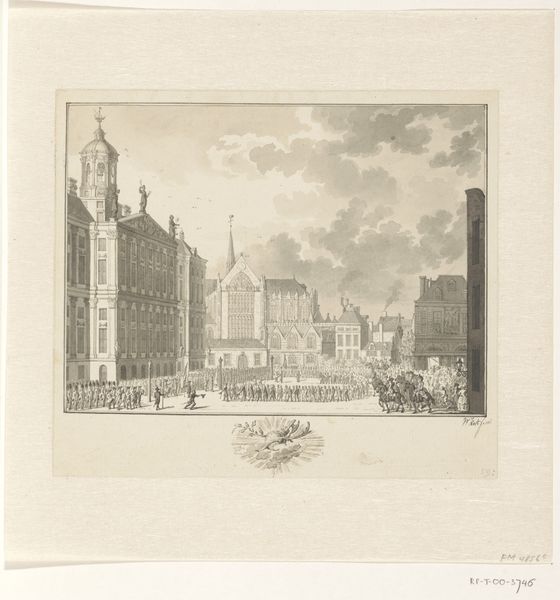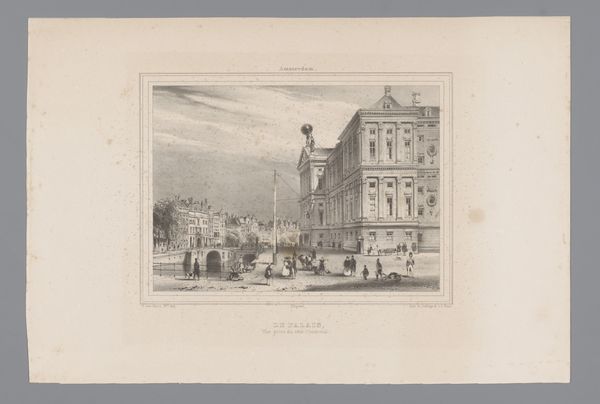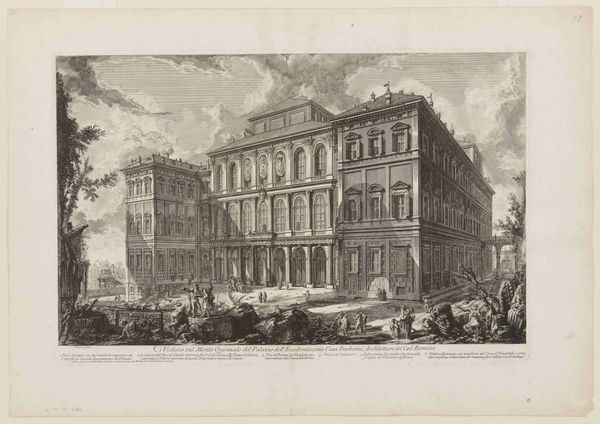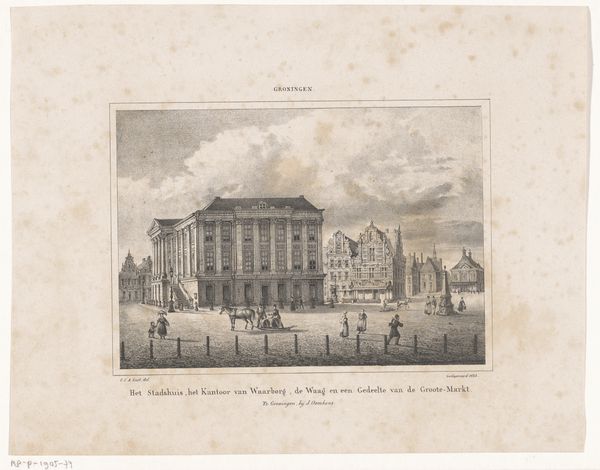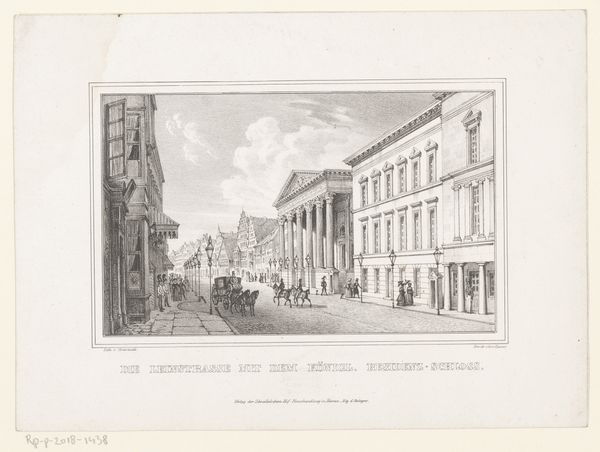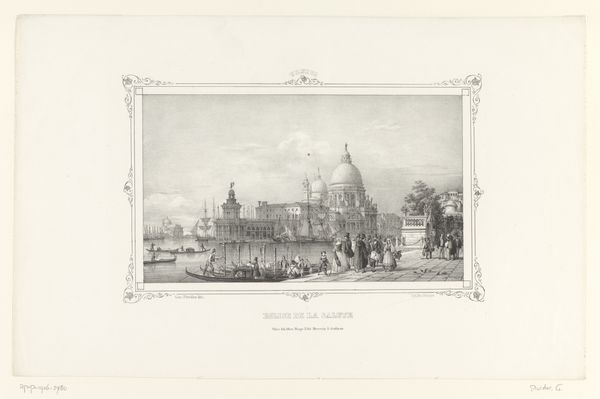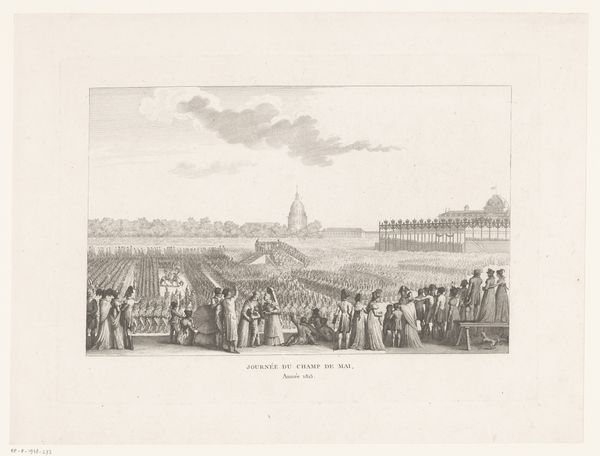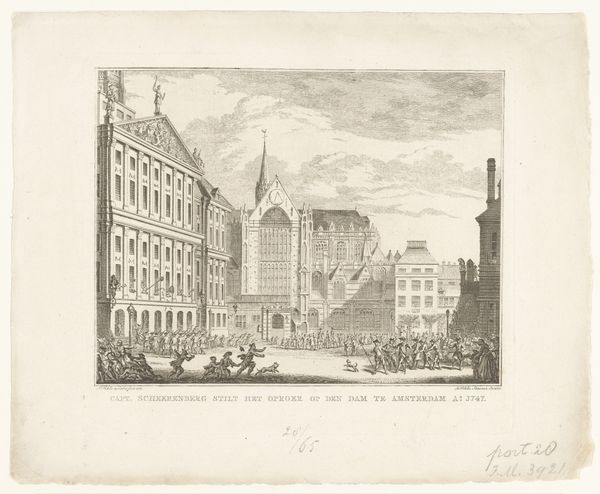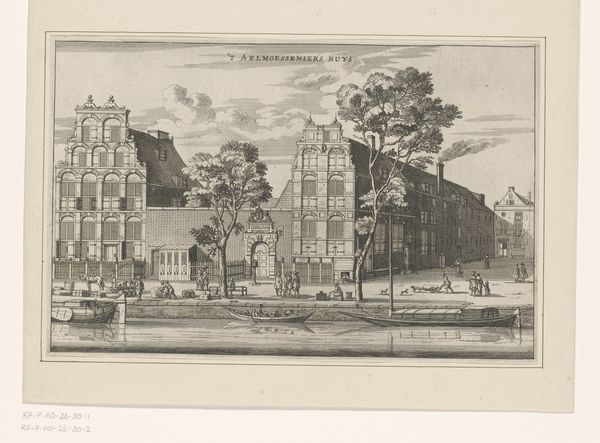
Gezicht op de achterzijde van de Nieuwe Kerk in Amsterdam 1844 - 1848
0:00
0:00
johanneshilverdink
Rijksmuseum
print, etching, engraving
# print
#
etching
#
landscape
#
historical photography
#
19th century
#
cityscape
#
engraving
#
realism
Dimensions: height 145 mm, width 220 mm
Copyright: Rijks Museum: Open Domain
Editor: Here we have Johannes Hilverdink's "View of the Back of the New Church in Amsterdam," made sometime between 1844 and 1848. It's an etching, a print, and gives a real sense of bustling 19th-century city life. What social narratives do you see at play here? Curator: Well, look at how the composition highlights the relationship between power, represented by the Palace, and faith, represented by the New Church. But it's the 'back' view, isn't it? What does it mean to see the institutions of power and faith from an obscured vantage point? Is Hilverdink inviting us to consider a critique, perhaps even a questioning of their authority? Editor: That’s interesting. I hadn’t thought about the viewpoint as being significant in itself. Are you suggesting it reveals something about societal perspectives at the time? Curator: Exactly. Think about who had access to the ‘front’ view, to the pomp and circumstance. Who was relegated to the back alleys, literally and figuratively? Consider the figures populating the street. Who are they? What are their roles? This print serves as a document, silently asking questions about class and access within the urban environment. It hints at power structures that were becoming increasingly contested. Editor: It’s easy to miss those social cues if you’re just looking at it as a pretty cityscape. So the artist is showing us the mechanics of a power structure from the side? Curator: Precisely! And it encourages us to consider what isn't being shown as well as what is. What silences are present in this seemingly ordinary urban scene? Editor: This makes me think differently about how landscapes can reflect the social and political landscape. Curator: Absolutely. Art often serves as a subtle mirror, reflecting not just the visual world, but also the power dynamics shaping it.
Comments
No comments
Be the first to comment and join the conversation on the ultimate creative platform.

